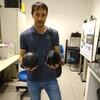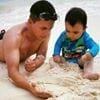Check out what is new in Dairy Cattle
Find the best technical articles, forums, and videos on Dairy Cattle at Engormix. Enter now and interact with the world's largest agricultural social network.
Evonik's animal feed solutions based on low-protein, amino acid enriched diets make animal husbandry more efficient and help save resources. With a growing global population and rising affluence in many regions, the appetite for meat is picking...
Comments : 4
Recommendations: 1
Introduction The challenge of the contemporary production of agricultural products is intrinsically linked to optimizing processes and production costs. Ensuring thermal comfort, considering that the intense incidence of solar radiation and the high temperatures observed practically throughout the year in the Brazilian semiarid region can cause stress, causing the animals to decline in production, can increase animal production (Leitão et al., 2013). Therefore,...
Comments : 0
Recommendations: 1
.mp4&w=3840&q=75)
Dr. Markus Wiltafsky-Martin, Responsible for Service Commercialization at Evonik Animal Nutrition, underscores why AMINODat® 6.0, is the most comprehensive animal nutrition database in the world that comprises nutritional data of more than 18,000 feed ingredient samples from all over the world and over 900,000 analytical results. ...
Comments : 18
Recommendations: 17


Supplementation with rumen-protected methionine optimized Lys/Met ratio in dairy rations based on alfalfa and corn silage
Suggested link
U.S. dairy and livestock trends point to a decline in methane emissions. While the greenhouse gas has been used by climate change activists to clobber animal agriculture, science points to a different trend.
Methane as a greenhouse gas has long been the Achilles’ heel for activists to attack animal agriculture. That appears to be shifting as scientific discovery suggests a reduction in atmospheric methane over the United States.
Frank Mitloehner, a professor and air...
Comments : 0
Recommendations: 1
.mp4&w=3840&q=75)
AMINONIR® Portable enables the reliable determination of energy, nutrients in feed raw materials and feed, as well as amino acids in feed raw materials, on-site and independent of a laboratory. The hand-held device connects with the user’s tablet or cell phone. It only requires mobile signal reception and a handful of feed or raw material without further sample preparation to determine their quality at almost any location within minutes....
Comments : 9
Recommendations: 8
In a previous article published some years ago here, dealing with cooling project that I accompanied in northern Mexico, I described the results from the first and second years of its implementation. The data were presented in a limited way, for a series of dairy farms belonging to the "Alpura" dairy cooperative, located in the warm regions of northern Mexico and characterized by long summer months, with extreme heat load conditions for dairy cows. These farms are mainly large and...
Comments : 3
Recommendations: 2
1. Introduction Goat production in Chile is carried out by poor small-scale farmers in semi-arid to arid agricultural conditions [1]. Milk and cheese are the main products obtained using artisanal, cultural and traditionally preserved methods where women and children are usually in charge of production [2]. The products are directly consumed by the family or sold to by-passers at good prices [3]. These production systems are similar in goat production around the world,...
Comments : 1
Recommendations: 1
An increase in the velocity of air, at a temperature lower than the surface temperature of the animal, has the potential to increase the sensible heat loss of the animal. An augmentation in air velocity will shift the upper critical temperature upwards. An effective ventilation system to reduce heat stress should emphasize the production of high air speed as much as the commonly accepted goal of reducing ambient temperature. Increasing the air velocity lowers the effective temperature...
Comments : 1
Recommendations: 1
INTRODUCTION Raising healthy calves is the foundation for a sustainable and profitable dairy herd. Dam nutrition during the last trimester, calving supervision/assistance, maternity facilities hygiene, umbilical care of calves, colostrum management, and calf nutrition are important factors that impact calf development and health (Lorenz et al., 2011). Calf mortality of 5% or less has been suggested as target for calfrearing operations (Lanuza, 2006). In Chile, however, there is...
Comments : 1
Recommendations: 0


Supplementation with rumen-protected methionine optimized Lys/Met ratio in dairy rations based on alfalfa and corn silage
Suggested link
INTRODUCTION Grazed pasture soils are a potential source of nitrous oxide (N 2 O) due to elevated inorganic N pools. N 2 O is the dominant source of microbial denitrification, and under suitable conditions, N 2 O may be reduced in the soil to the environmentally harmless di-nitrogen gas (N 2 ). One of the key nitrogen (N) sources is urine deposited from grazing animals. The loading rate of N in a cow urine patch is determined by the dietary N...
Comments : 1
Recommendations: 0
Objective The aim of this work was to compare the parameters of an in vitro embryo production program of cows of different breeds in Paraguay. Materials and methods A total of 4811 OPU sessions were performed between 2016 and 2019 in cows classified according to their breed. Beeftype breeds: Nelore (Bos indicus): n = 1569; Aberdeen Angus (Bos taurus): n = 1276; and Brangus (Cross): n = 182 OPU, and Gyr (Bos indicus):...
Comments : 0
Recommendations: 1
Over the past two decades research in milking management has focused on decreasing the time that units are attached to cows by researching optimal teat stimulation and prep-lag time, pulsation ratios and liner compression and raising automatic take-off settings.
Optimal teat stimulation and prep lag time
Prep Lag time is the time from the start of teat stimulation, to milking unit attachment.
Nearly 50 years ago (1980) Ram Sagi achieved, a higher milk...
Comments : 0
Recommendations: 0
...
Comments : 0
Recommendations: 0
Introduction Genetic variability of livestock populations is fading. This is due, in part, to genetic improvement programs (FAO, 1998; Gutiérrez and Goyache, 2005). Boichard et al. (1997) mentioned that change in genetic variability across generations could be described by genealogical characterization; and the conservation and consanguinity status of populations can be monitored (Vicente et al., 2012; Pienaar et al., 2015). Genealogical analysis requires the creation and...
Comments : 0
Recommendations: 0
The summer of 2020 will be remembered as one of the hottest summers in Israel in decades. The summer heated many agricultural sectors, including the dairy industry. Beyond high heat load conditions throughout the summer, two unusual heat waves stood out in particular. The first heat wave was in May and the second in early September, as can be seen in fig 1. Fig. 1 – average daily milk production (kg) per cow in Israel in 2020. (blue line 2019, red...
Comments : 1
Recommendations: 0


Supplementation with rumen-protected methionine optimized Lys/Met ratio in dairy rations based on alfalfa and corn silage
Suggested link
...
Comments : 1
Recommendations: 1
INTRODUCTION Producing food from farmed animals is a large and very complex process that occurs in integrated networks made up of many individual animal producers, supporting businesses (veterinarians, feed suppliers, animal haulers, animal marketers, etc.), and processors (slaughter plants) (1–4). Farmed animal food has many names including Agri-Food systems, food animal value chains, food supply chains, livestock production systems, and others. For simplicity...
Comments : 0
Recommendations: 1
Trace elements are required for numerous metabolic functions in livestock. Optimal production and performance require adequate intake of balanced trace minerals. As trace mineral status of the animal declines from adequate to marginal, immunity and enzyme functions are compromised followed by the loss of performance and reproduction. ...
Comments : 6
Recommendations: 8
Introduction Animal-source feedstuffs are generally superior to plant-source ones for the growth and health of livestock, poultry, and fish (Wu 2018). This is due, in part, to the greater quantity of proteinogenic amino acids (AAs) and higher quality (the ratios and digestibilities of AAs) of the former than the latter. Traditionally, extensive research has focused on AAs that are not synthesized by animal cells and are known as nutritionally essential AAs (EAAs), including...
Comments : 2
Recommendations: 0


.jpg&w=3840&q=75)

















